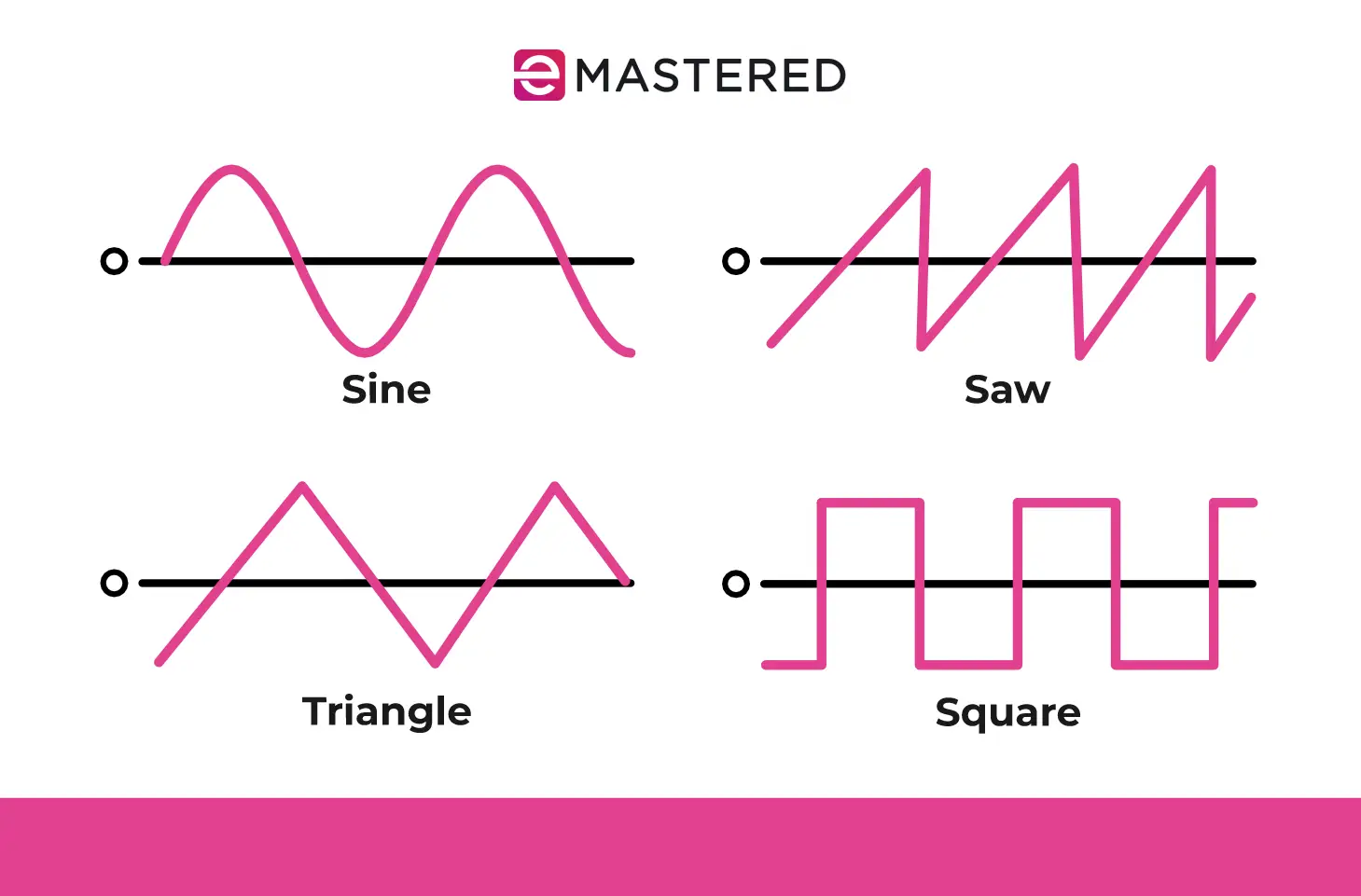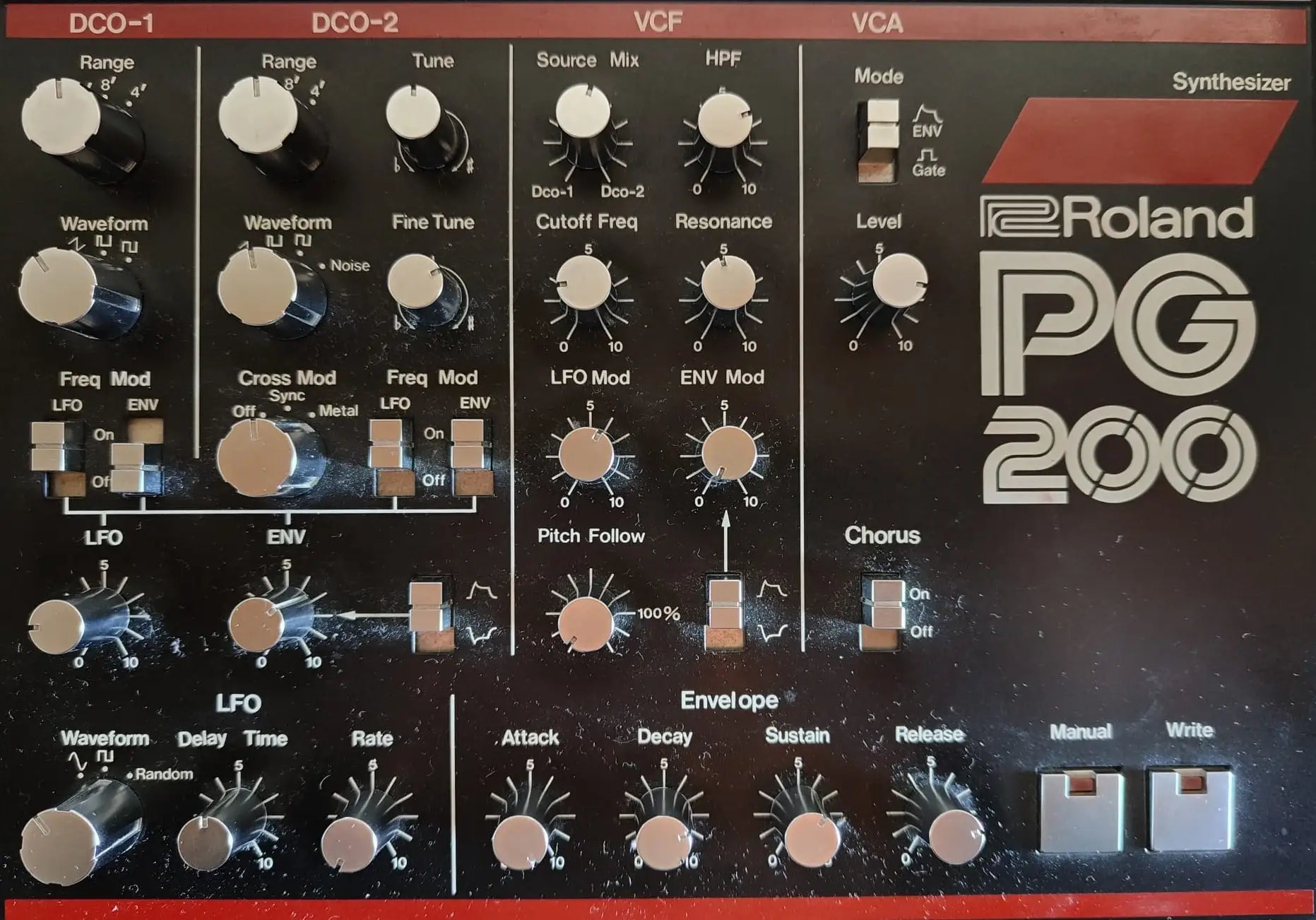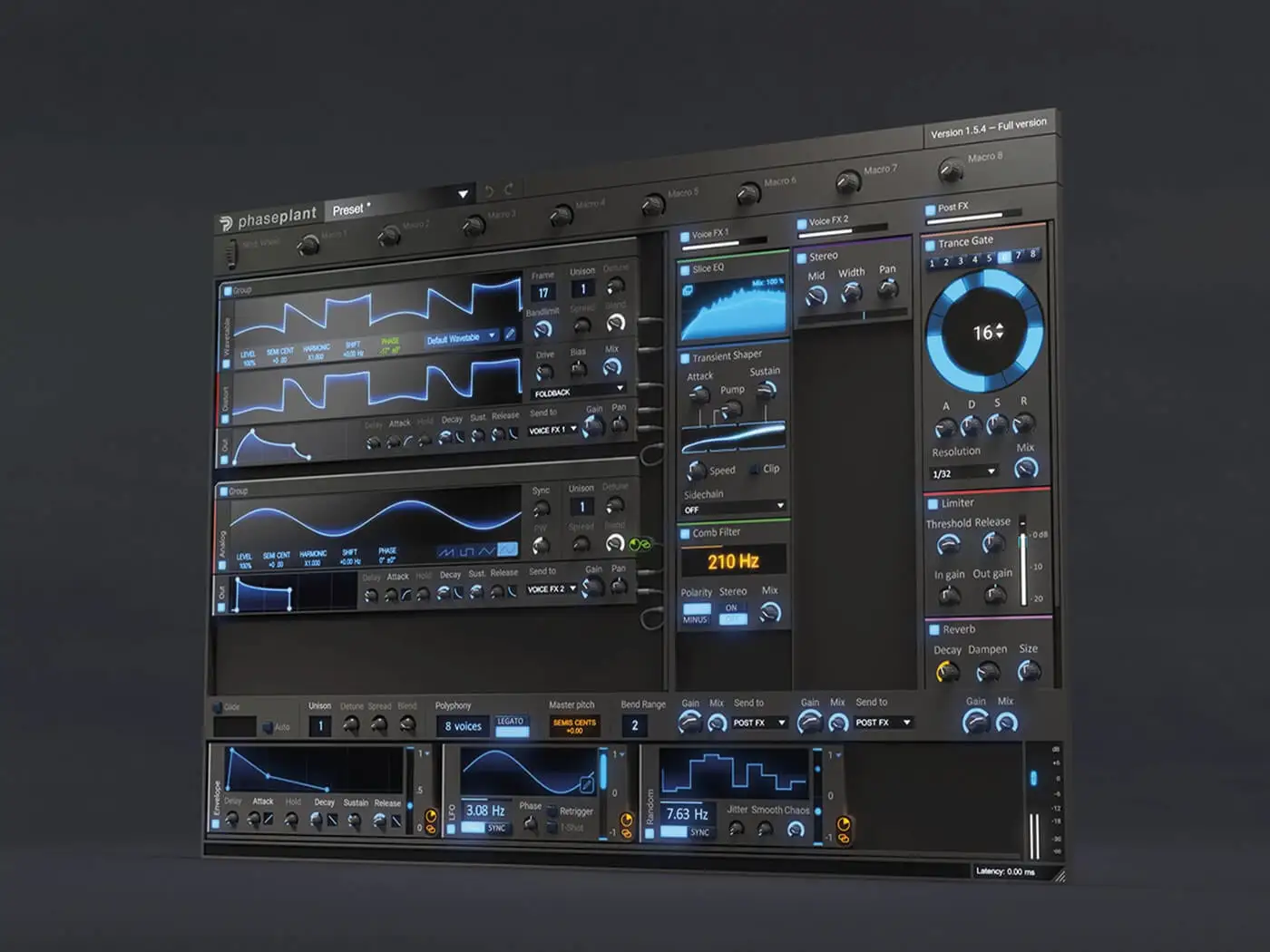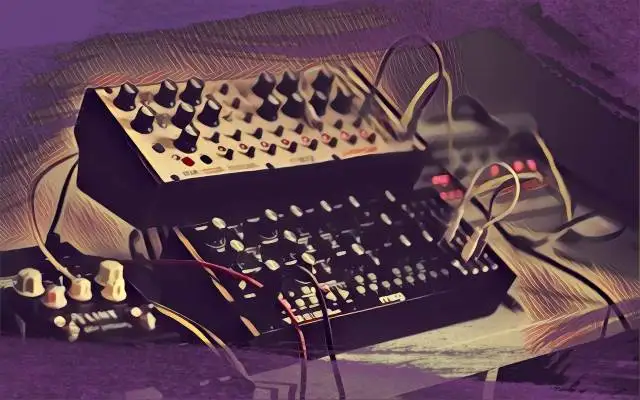To say that oscillators changed music production wouldn’t be an exaggeration. Since the birth of sound synthesis at the beginning of the 20th century, oscillators have been the core of most electronic musical instruments, defining the way most of these instruments generate sound.
Oscillators are basically what generate the signals that create melodies, harmonies, and textures. For a producer, getting a grip on how they work means being able to craft unique sounds, make the most of their synths and plugins, and master the "magic" happening within electronic musical instruments.
Today, we’ll talk about all things oscillators: what they are, their role in music production, and how you can use them to shape your sonic palette.
What Does an Oscillator Do?
In a nutshell, electronic oscillators make sound by rapidly switching between two states. They do so by generating a waveform which is looped at an extremely high rate to create a specific pitch. Just like the vibrating string of an acoustic guitar, electronic circuits produce a waveform that can be amplified to create sound.
An oscillator's output has three main features: frequency, which determines the pitch, amplitude, which affects the volume, and waveform, which influences the tone.
Frequency is about how fast a sound wave moves, and it’s measured in Hertz (Hz). When the frequency is high, the pitch sounds high, and when it’s low, the sound is deeper.
Amplitude defines how loud a sound is. With a “real” instrument, if you play harder, the sound is louder because the amplitude is greater. In electronic music, louder sounds result from higher voltage levels.
Finally, the waveform affects the quality or timbre of the sound. Different shapes of sound waves create different sounds. Based on the waveforms they create, we can divide oscillators into two types: harmonic oscillators (also called linear oscillators) and relaxing oscillators.
A harmonic oscillator creates smooth and regular wave patterns, similar to how a swing moves back and forth. They work by moving energy between two parts, like inductors and capacitors in an LC oscillator, or quartz crystals in a crystal oscillator. Think of it like a pendulum that keeps swinging because it continually shares its energy between two points.
Common types of harmonic oscillators are LC oscillators, RC oscillators, and quartz crystal oscillators. You’ll find them in things like radio transmitters, clock signals, and incredibly accurate devices like atomic clocks. The waves they produce are very clean and stable.
On the other hand, relaxation oscillators create waves by charging and discharging energy storage parts like capacitors. Instead of producing smooth waves, they generate sharper waveforms like square waves, sawtooth waves, or triangular waves. It’s like a light switch that turns on and off quickly, creating rapid changes between high and low states.
You can find relaxation oscillators in devices like RC oscillators, phase shift oscillators, and voltage-controlled oscillators used in synthesizers.
Now, let’s analyze each type of waveform.

Sine Wave
The sine wave is the simplest of all waveforms, with only a single fundamental frequency without any harmonics.
Its smooth and pure tone doesn’t exude the richness and complexity of other waveforms, which is why it’s often used for soft and rounded sounds like flutes, drawbar organs, and sub-bass frequencies.
Because of its simplicity, the sine wave is usually used in additive synthesis and frequency modulation synthesis, by layering multiple sine waves at different frequencies.
Sawtooth Wave
The sawtooth wave is one of the most harmonically rich waveforms, with all harmonics in inverse proportion to their harmonic number.
This means that as the harmonic frequency increases, its amplitude decreases. The result is a bright and slightly harsh sound, which you often find in brass, strings, or prominent lead tones.
Because the sawtooth wave includes all harmonic overtones, it has a naturally rich character that works perfectly in subtractive synthesis, where filtering can further adjust its timbre.
Square Wave
While similar to the sawtooth wave in strength, the square wave has a unique harmonic structure, with only odd-numbered harmonics in inverse proportion to their harmonic number.
This gives a distinct hollow sound signature that works well with clarinets, reed instruments, and more. The square wave’s smaller harmonic content makes it less bright than a sawtooth wave but still rich enough for lead and bass sounds.
Triangle Wave
Like the square wave, the triangle wave contains only odd harmonics, but at much lower amplitudes.
The harmonic reduction follows a squared relationship: the third harmonic is one-ninth the amplitude of the fundamental, the fifth is one twenty-fifth, and so on.
The result is a soft and mellow tone that resembles a sine wave but with a subtle and buzzy edge.
Pulse Wave
The pulse wave is a variation of the square wave where the ratio between the high and low portions of the wave can be adjusted. This change in symmetry changes the harmonic content, emphasizing or removing specific harmonics.
A perfect square wave has a 1:2 duty cycle that lacks even harmonics, while a 1:3 pulse wave removes all harmonics that are multiples of three. When combined with pulse width modulation (PWM), so that the duty cycle shifts dynamically over time, the pulse wave becomes a great option for crafting evolving soundscapes.
How a Synthesizer Works

As you might have guessed already, a synthesizer is a combination of different components that work together to generate and shape sound. These components usually are: oscillators, filters, envelope generators, voltage-controlled amplifiers (VCA), low frequency oscillators (LFO), and mixers.
The principles that define all hardware synthesizers are based on electronic signal manipulation. Let’s take a look at all the controllers that shape the sound coming from a synth.
The Role of the Oscillator
The starting point when shaping sounds with a synthesizer is the electronic oscillator circuit, which we discussed earlier.
An electronic oscillator is a circuit that produces a specific output signal: a repeated wave cycling between two voltages. The speed at which this cycle occurs (called oscillating frequency) defines the pitch of the sound, while the shape of the waveform affects its timbre.
The concept behind electronic oscillators is not unlike that of mechanical oscillators. A mechanical oscillator is a system that moves back and forth repeatedly, switching energy between kinetic and potential forms. A great example is the pendulum in a clock, which swings thanks to gravity.
The Filter Shapes the Harmonic Content
Once the waveform is created, it passes through a filter, which removes or emphasizes certain frequencies.
A filter has an input signal, an output, and several controls to define how the sound should be processed.
There are several types of filters, but the most common ones are:
- A low-pass filter allows lower frequencies to pass through while attenuating higher ones.
- A high-pass filter removes lower frequencies and lets the higher ones remain.
- A band-pass filter isolates a specific range of frequencies, cutting both highs and lows outside the set range.
Filters also have a resonant frequency, which is the frequency at which they boost the signal rather than mitigate it. This resonance control enhances the cutoff point and adds character to the sound.
Controlling Amplitude with the VCA and Envelope Generator
A synthesizer needs a way to control how loud a sound can get. This is what the voltage-controlled amplifier (VCA) and envelope generator are for.
The VCA is basically a volume knob to adjust the level of the output frequency based on an incoming control signal.
An envelope generator changes the way a sound evolves. The most common type of envelope follows the ADSR model:
- Attack : The time it takes for a sound to rise from silence to full volume.
- Decay : The time it takes for the volume to drop from its peak to the sustain level.
- Sustain : The level at which the sound holds while a key is pressed.
- Release : The time it takes for the sound to fade after the key is released.
Basically, when a key is pressed, the keyboard sends two voltage signals: one determines pitch, while the other is a gate signal that triggers the envelope generator. The envelope then controls the VCA, affecting the sound’s dynamic expression.
Modulation
Synthesizers often feature modulation options to add movement and variation to a sound, the most popular of which is the low frequency oscillator (LFO).
Unlike the primary oscillator circuit, which affects the audio range of audible musical notes, an LFO oscillates at a much lower frequency range (usually below 20 Hz).
Therefore, instead of producing audible tones, LFOs are used to modulate other parameters, such as pitch (vibrato), amplitude (tremolo), or filter cutoff frequency (wah effect).
Another form of modulation is frequency modulation (FM synthesis), where one oscillator (the modulator) alters the frequency of another oscillator (the carrier), producing more articulated timbres.
Digital vs. Analog Synthesis
Although vintage synthesizers use analog oscillators and circuits, modern synthesizers can often recreate the same effect digitally.
A digital circuit represents sound as numerical values, which are processed by an algorithm before being converted back into an analog signal through a digital-to-analog converter (DAC).
Some synthesizers combine analog and digital components, and despite the popularity of digital synthesis, analog synths are still in demand because of the warmth and organic imperfections of analog components, like resonant frequency filters and oscillating circuits.
There's an ongoing debate as to whether VST plugins can perfectly recreate the sound of analog synthesizers. In my experience as a musician, I've come across many phenomenal plugins that sounded just like the original synths. In fact, they were barely distinguishable from the real thing, however, playing the actual hardware offers a more hands-on experience, especially when performing live.
That said, VST plugins tend to cost a fraction of the hardware they're inspired by, so you should definitely take them into account, especially if you've just entered the world of sound synthesis.
The Final Signal Path
To summarize, a standard subtractive synthesizer follows this signal path:
- The oscillator generates a waveform with a constant amplitude and output signal.
- The filter shapes the harmonic content by mitigating or boosting frequencies.
- The envelope generator and VCA control how the sound evolves over time.
- A modulation source, like an LFO or phase shift oscillator, adds movement to the sound.
- The final signal is sent to a mixer, radio transmitter, or audio frequency equipment.
Needless to say, many synthesizers can do way more than this.
Many high-end synthesizers feature more modulation options, like phase-locked loops, feedback oscillators, quartz crystal oscillators, sampling options, as well as radio frequency oscillators.
Using Sound Synthesis to Create a New Instrument

Sound synthesis offers musicians and producers the ability to create new instruments from scratch. In this section, we'll explore how to use sound synthesis to craft a new instrument, whether you’re using a real synth or a plugin.
At the heart of any electronic instrument’s character is its waveform, and that’s where you should start when creating your new sound. Different waveforms produce unique tonal qualities, affecting how bright, warm, or harsh a sound feels.
Based on the properties of each waveform, choose one based on the role your instrument will have in the soundscape you’re building. Next, use the other components offered by the synthesizer, such as filters, envelope generators, and modulation settings, to shape the final sound.
For instance, try to create a simple subtractive synthesizer. Adjusting the filter and envelope settings, which control the sound's attack, decay, sustain, and release, can change a long and sustained pad sound into a short and percussive pluck.
Or imagine starting with a basic accordion preset in a synthesizer. When you turn off any extra oscillators, low-frequency oscillators (LFOs), and vibrato, the sound is greatly simplified. By brightening the filter and shortening the amp envelope settings, you can transform the pad into a sharp stab sound.
Even a square waveform, which is often used to create bright and bold sounds, can become something totally different. With some adjustments to the filter cutoff and a longer envelope setting, a square wave can serve as the foundation for a soft ambient pad.
In order to craft unique sounds, you’ll need to fully understand the characteristics of basic waveforms. By blending different waveforms at different volumes, you can create complex and captivating soundscapes.
Leads
Speaking of the role of the instrument you’re creating, remember that leads need to have sonic characteristics that make them stand out when mixed with the rest of the track.
Depending on the waveform and processing you choose, lead sounds can be piercing, mellow, smooth, or aggressive. Usually, a square wave lead with an open filter delivers a classic and powerful synthesizer sound, while a triangle wave lead can help create more of a flute-like effect.
A sawtooth wave lead can help you create a rich and full tone that fits well with most electronic genres. By mixing sine and square waves, you can add roundness to plucked leads, while adding noise elements that can give a grittier character to your sound.
Basslines
Especially in electronic and hip-hop, synths are used to generate unique bass sounds. And here, once again, options are endless.
For subtle and deep bass, the best option is a simple sine wave, because it naturally produces a smooth, low-end sound. On the other hand, if you’re looking for an acid bass, a sawtooth or square wave, combined with added resonance and filter modulation, creates that classic acid sound reminiscent of the iconic Roland TB-303.
You can also create a heavy bass tone by mixing sawtooth and square waves, sometimes underpinned by a sine wave to give it more depth. Mellow bass can be crafted using a triangle waveform, which has a more natural and less synthetic sound quality.
Pads
Pads are the background sound that gives a track its vibe and rhythm. They usually have slow builds and fades, bringing to life a layered sound that moves the track forward.
When creating pads, the type of waveform you pick is important, but how you tweak and filter it is what really makes the difference.
Square and pulse waves can sound a bit like woodwinds or strings, while sawtooth waves can help create a more enveloping sound. Triangle waves have a soft and dreamy quality, and sine waves add a deep richness to the sound texture.
Using longer settings for the sound and turning down the high frequencies helps you design the mood of a pad. Even brighter waveforms can be smoothed out with some careful filtering and reverb, making them easier on the ears.
How to Create Synth Sounds
The real magic happens when you get hands-on and start experimenting.
Regardless of whether you're using a hardware synth or a VST plugin, understanding how oscillators work is what will allow you to create sounds that only exist in your mind.
It's not about turning knobs at random and hoping that something interesting will happen; it’s about knowing what’s happening under the hood and how the different types of oscillators, circuits, and waveforms interact to shape the sound.
So where do you start? The answer is simple: generate an oscillating signal that produces sound waves. This signal is the foundation of any synth patch, and it comes in the various shapes we discussed.
A great way to practice is by using a voltage controlled oscillator (VCO). These oscillators allow you to adjust the output frequency with a control voltage, giving you a hands-on way to explore sound design.
Start by selecting a sine wave, which has no additional harmonics. Then, switch to a square wave, which introduces odd harmonics, and try tweaking the duty cycle to create pulse waves and hear how different ratios affect the tone.
Now it’s time to explore feedback oscillators and phase shift oscillators. These tools can introduce both subtle and extreme changes to the sound by feeding the output signal back into the oscillator circuit. You can use this technique to create anything from smooth vibrato effects to more chaotic textures.
Another important aspect to understand is how oscillator circuits work in different synth designs. Some synths use LC oscillators, which rely on inductors and capacitors to generate oscillations, while others use crystal oscillators, which provide ultra-stable frequencies using quartz crystals.
These are commonly found in digital synthesizers, fixed frequency oscillators, and radio frequency oscillators for radio transmitters and receivers. The stability of an oscillator defines how steady the pitch remains.
Once you get a grip on the basics, you can experiment with phase locked loops (PLLs) and relaxation oscillators. PLLs give you more frequency control by locking onto an input frequency, which makes them useful when syncing oscillators in modular setups.
Relaxation oscillators, on the other hand, create non-sinusoidal waveforms through rapid charging and discharging of capacitors, which is the best option when trying to create percussive sounds.
Ultimately, how good you are in synth programming will be defined by how skilled you are at shaping your oscillator's output with filters and modulation.
Try routing your oscillating signal through a low-pass filter to smooth out harsh overtones, or use a high-pass filter to thin out a bass-heavy sound effect. Modulate the filter cutoff with an LFO (low frequency oscillator) for a wobbling effect, or use an envelope generator to create dynamic swells and plucks.
To dive deeper into oscillator behavior, learn more about positive feedback and feedback loops within your synth. For instance, increasing feedback in a delay circuit can turn a simple sound into an evolving texture. Or using a resonant frequency boost can emphasize specific harmonics, creating a squelchy synth sound that might work well with leads.
Finally, when working with digital synths, you might come across terms like clock frequency, clock signal, and clock pulses. These terms refer to the timing of an oscillator within an electronic circuit, which helps the synth stay in sync with other elements.
Practice Creating Sounds
One of the best ways to practice creating synth sounds is to recreate familiar instruments using only basic waveforms. Start with a simple sine wave and see if you can shape it into a flute sound using an envelope and a bit of vibrato. Then, take a sawtooth wave and craft a brass-like synth lead by adding a filter envelope and some detuning.
Many synths have built-in output waveform visualizers, which allow you to see how waveforms change as you tweak parameters. Watching how a square wave morphs into a sawtooth wave with a little filtering can make all the difference in your understanding of synthesis.
All in all, mastering synth sound design is all about practicing using the specific instrument you have available.
Don't waste your time and money buying expensive synths you can modulate endlessly, but rather invest time and energy in learning everything about whichever synth you have at home or in your DAW. Take your time to play with different oscillator circuits in your synth and see how they impact the sound. Test the effect of variable capacitors on frequency response, and try to push your synth's capabilities to the limit.
It doesn't matter whether you're working with analog hardware or digital plugins; the secret is to explore, tweak, and experiment until you find the sounds that perfectly fit your track.
Final Thoughts
I hope this guide helps you make the most of your synth!
Remember that while all synthesizers share common traits, each one has its own sound signature, which means that the same sounds manipulated by different synths will create different soundscapes.
Take your time not just understanding how each tool affects sounds but also how different waveforms and effects blend with each other. To create complex sound textures, you need to know how to layer sound cohesively to create an immersive aural experience.
Finally, make the most of the countless tutorials you can find online. Whichever synth you decide to use, I’m pretty sure you’ll find a plethora of reviews and videos that’ll explain to you how to make the most of your instrument.
Good luck, and stay creative!





